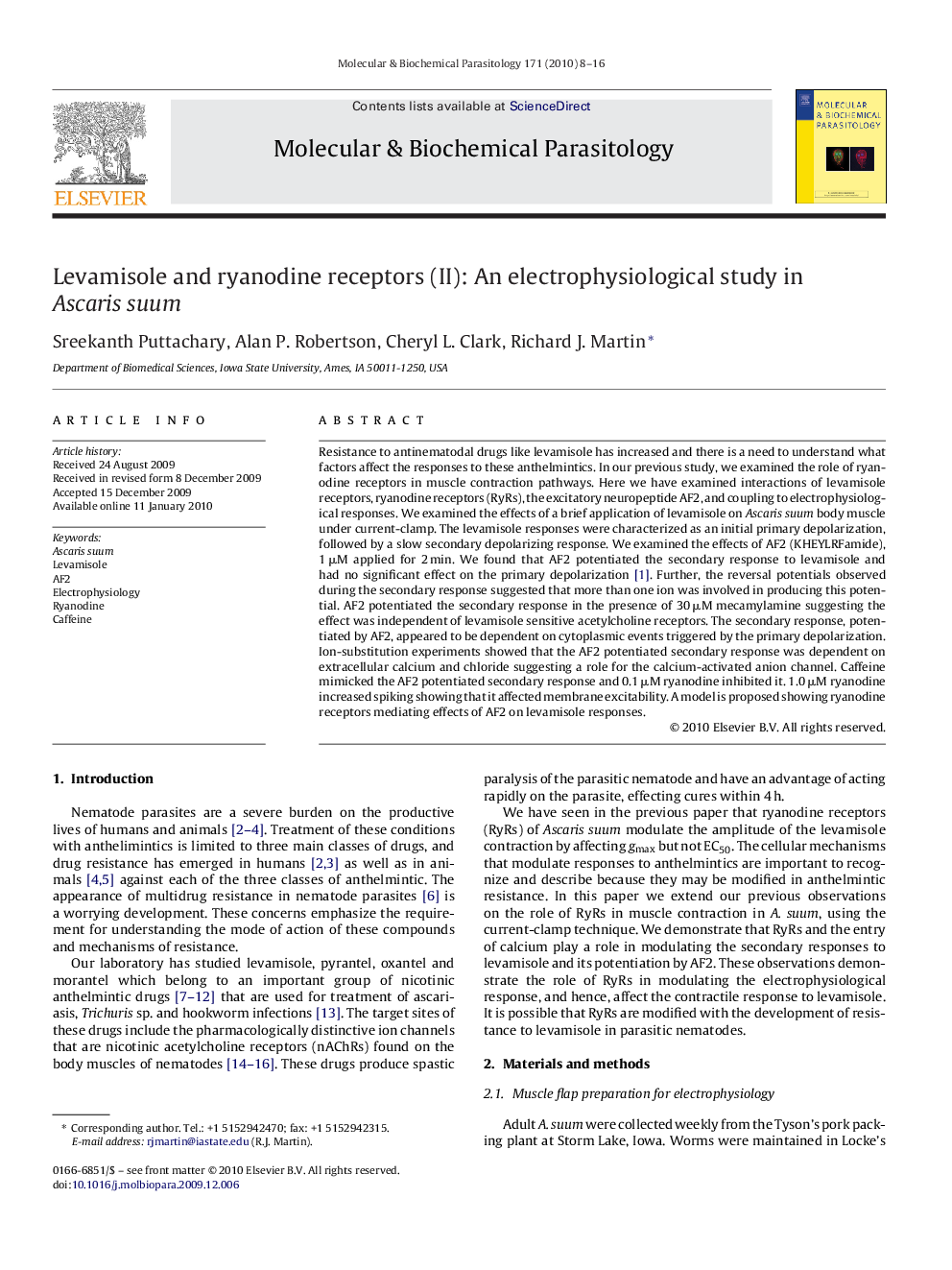| کد مقاله | کد نشریه | سال انتشار | مقاله انگلیسی | نسخه تمام متن |
|---|---|---|---|---|
| 2829938 | 1163330 | 2010 | 9 صفحه PDF | دانلود رایگان |

Resistance to antinematodal drugs like levamisole has increased and there is a need to understand what factors affect the responses to these anthelmintics. In our previous study, we examined the role of ryanodine receptors in muscle contraction pathways. Here we have examined interactions of levamisole receptors, ryanodine receptors (RyRs), the excitatory neuropeptide AF2, and coupling to electrophysiological responses. We examined the effects of a brief application of levamisole on Ascaris suum body muscle under current-clamp. The levamisole responses were characterized as an initial primary depolarization, followed by a slow secondary depolarizing response. We examined the effects of AF2 (KHEYLRFamide), 1 μM applied for 2 min. We found that AF2 potentiated the secondary response to levamisole and had no significant effect on the primary depolarization [1]. Further, the reversal potentials observed during the secondary response suggested that more than one ion was involved in producing this potential. AF2 potentiated the secondary response in the presence of 30 μM mecamylamine suggesting the effect was independent of levamisole sensitive acetylcholine receptors. The secondary response, potentiated by AF2, appeared to be dependent on cytoplasmic events triggered by the primary depolarization. Ion-substitution experiments showed that the AF2 potentiated secondary response was dependent on extracellular calcium and chloride suggesting a role for the calcium-activated anion channel. Caffeine mimicked the AF2 potentiated secondary response and 0.1 μM ryanodine inhibited it. 1.0 μM ryanodine increased spiking showing that it affected membrane excitability. A model is proposed showing ryanodine receptors mediating effects of AF2 on levamisole responses.
Electrophysiological effects of a brief application of levamisole on Ascaris suum body muscle under current-clamp consisted of an initial primary depolarization, followed by a slow secondary depolarization. The secondary depolarization was sensitive to AF2, ryanodine, calcium and chloride. A model was developed showing ryanodine receptors mediating effects of AF2 on the secondary levamisole response.Figure optionsDownload high-quality image (90 K)Download as PowerPoint slide
Journal: Molecular and Biochemical Parasitology - Volume 171, Issue 1, May 2010, Pages 8–16